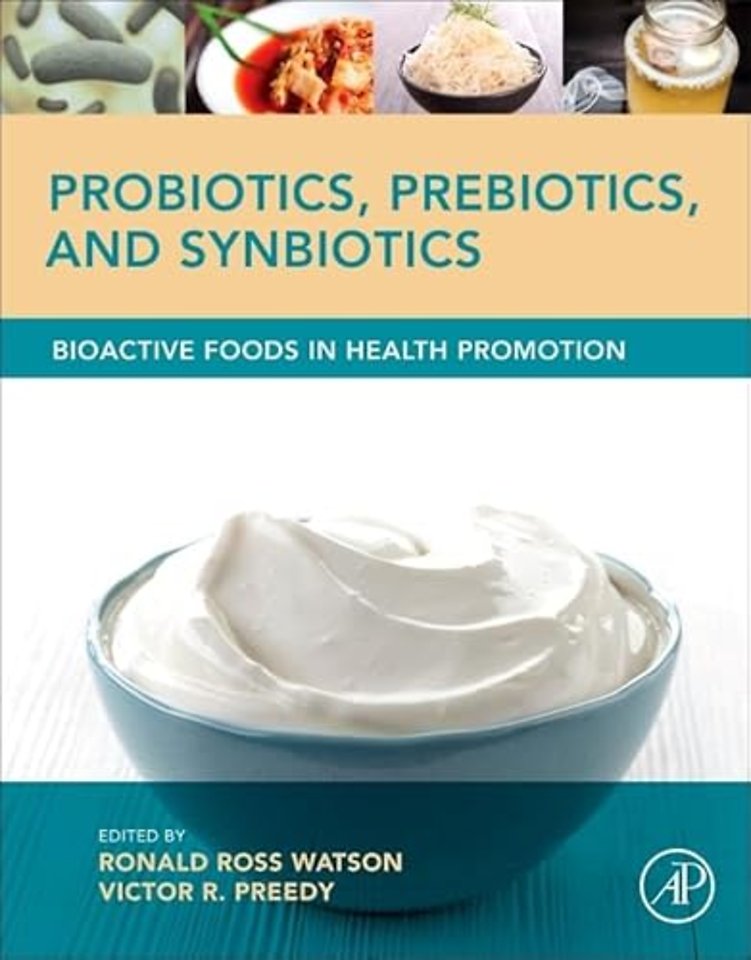<p>Part 1: Prebiotics in Health Promotion <br>1. Prebiotics and probiotics: An assessment of their safety and health benefits<br>2. Pre- and Probiotic Supplementation in Ruminant Livestock Production <br>3. Prebiotic addition in dairy products: processing and health benefits <br>4. Low lactose Prebiotic-enriched milk <br>5. Intestinal microbiota in breast-fed infants: insights into infant-associated bifidobacteria and human milk glycans<br>6. Probiotics and Prebiotics for Promoting Health: via Gut Microbiota<br>7. Prebiotics in human milk and in infant formulas <br>8. Prebiotics and Probiotics in infant nutrition<br>9. Synthesis of Prebiotic Galactooligosaccharides: Science and Technology<br>10. Prebiotics as protectants of lactic acid bacteria <br>11. Prebiotic agave fructans and immune aspects<br>12. Prebiotic use in children <br>13. Structural characteristics and prebiotic effects of lotus seed resistant starch </p> <p>Part 2: Probiotics in Food<br>14. Probiotic Lactobacillus strains from Iranian traditional cheeses <br>15. Safety of Probiotic Bacteria<br>16. Stressors and food environment: towards strategies to improve robustness and stress tolerance in probiotic<br>17. Effect of food composition on probiotic bacteria viability <br>18. Probiotics and antibiotic use <br>19. Multistrain Probiotics: the present forward the future<br>20. Production of Probiotic Cultures and Their Incorporation into Foods <br>21. Prebiotics and Other Microbial Manipulations in Fish Feeds: Prospective Update of Health benefits <br>22. Current and future applications of bacterial extracellular polysaccharides <br>23. Probiotic and prebiotic dairy desserts <br>24. Lactobacillus paracasei-enriched vegetables containing health promoting molecules<br>25. Probiotics from the olive microbiota <br>26. Kimchi (Korean fermented vegetables) as a probiotic food <br>27. Probiotics as potential adsorbent of aflatoxin </p> <p>Part 3: Synbiotics: Production, Application, and Health Promotion<br>28. Beta-glucans and synbiotics <br>29. Probiotics and synbiotics in lactating mothers<br>30. Symbiotics and the immune system <br>31. Synbiotics and immunization against H9N2 Avian influenza virus<br>32. Probiotics, prebiotics, synbiotics and foodborne illness<br>33. In vitro screening and evaluation of synbiotics <br>34. Synbiotics and infantile acute gastroenteritis <br>35. Symbiotics, probiotics and fiber diet in diverticular disease<br>36. Gut Microbiota: Impact of Probiotics, Prebiotics, Synbiotics, Pharmabiotics and Postbiotics on Human Health<br>37. Potential benefits of probiotics, prebiotics, and synbiotic on the intestinal microbiota of the elderly<br>38. Synbiotics in gastrointestinal surgery<br>39. Probiotics, Prebiotics, Synbiotics and other strategies to modulate the gut microbiota in Irritable Bowel Syndrome (IBS)<br>40. Gut microbiota & IBS <br>41. Synbiotics: a new strategy to improve immune system from gut to the peripheral sites <br>42. Probiotics and prebiotics for prevention of viral respiratory tract infections<br>43. Synbiotics in the Intensive Care Unit<br>44. Properties of probiotic bacteria: a proteomic approach<br>45. Symbiotic organisms and gut epithelial homeostasis<br>46. Non prebiotic actions of prebiotics</p> <p>Part 4: Probiotics in Health<br>47. Probiotics and physical strength <br>48. Probiotics in Invasive Candidiasis<br>49. Probiotics and usage in bacterial vaginosis <br>50. Evidence and rational for probiotics to prevent infections in the elderly<br>51. Probiotics usage in childhood Helicobacter pylori infection <br>52. Lipoic acid function and its safety in Multiple sclerosis<br>53. Probiotics and health: What publication rate on probiotics, prebiotics and synbiotics implies? <br>54. The Cholesterol lowering effects of probiotic bacteria on lipid metabolism <br>55. The Use of Prebiotics, Probiotics, and Synbiotics in the Critically Ill<br>56. Gynecological health and probiotics</p> <p>Part 5: Probiotics and Chronic Diseases<br>57. Probiotics in inflamatory bowel diseases and cancer prevention<br>58. Resistant starch as a bioactive compound in Colorectal Cancer prevention<br>59. Probiotics in cancer prevention, updating the evidence<br>60. Cardiovascular Health and Disease Prevention: Association with Foodborne Pathogens and Potential Benefits of<br>Probiotics <br>61. Probiotics usage in heart disease and psychiatry<br>62. Intestinal microbiota and susceptibility to viral infections. Role of probiotics.<br>63. Probiotics and usage in urinary tract infection<br>64. Probiotics: immunomodulatory properties in allergy and eczema<br>65. Prebiotics and Probiotics for the Prevention and Treatment of Food Allergy<br>66. Prebiotics and probiotics for the prevention and treatment of allergic asthma <br>67. Amelioration of Helicobacter pylori induced PUD by probiotic lactic acid bacteria </p>

